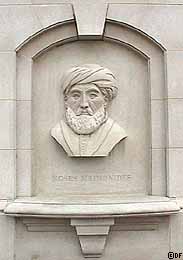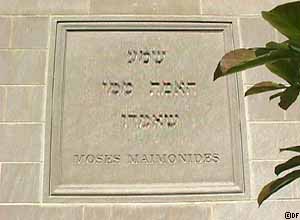

 Freemasonry in Israel
Freemasonry in Israel


 Freemasonry in Israel
Freemasonry in Israel
 Freemasonry in Israel > Articles > Research > Pythagoras and Mystic Science
Freemasonry in Israel > Articles > Research > Pythagoras and Mystic Science
Pythagoras and Mystic Science
D Farhey
Reprinted and modified from The Israeli Freemason

Researchers mention 4 ancient Greek personalities named Pythagoras (among them an athlete). The most famous one — the mathematician, seemingly born on the Greek island of Samos, lived between circa 580 and 500 BCE. During a short journey to Egypt, when being a young man of 22, Thales (the reknown Greek philosopher) suggested him to study in Egypt to enlarge his knowledge. On his return to Greece, he prepared himself to travel to Tyre in Lebanon, apparently because of a commercial connection of his father. There, he was initiated for the first time into the Ancient Mysteries of the Phoenicians and studied for about 3 years in the temples of Tyre, Sidon, and Byblos. From there, he navigated to Egypt, the source of the Ancient Mysteries. On the road, he lingered for a while in the gulf of Haifa at a temple on Mount Carmel, Israel (after the destruction of the First Hebrew Temple of Jerusalem). In Egypt, he was initiated and studied for about 22 years. Apparently, he studied for another 13 years in Babylon as well, while he was captured on his way back from Egypt to Greece.
In fact, the Ancient Mysteries' Magi specialized in science as it was perceived in those days, with the considerable influence of their "specialization" in idolatry/paganism. The sparse knowledge of the Magi and the surrounding society caused the secrecy and mysticism.
In his way back to Samos, when 56 years old, Pythagoras found that the island was subdued under the tyrannical yoke of Polycrates. Failing to establish there a school, he decided to leave and traveled to Magna-Grecia in southern Italy. He settled in Crotona and founded there the famous Pythagorean school of philosophy, mathematics, and natural sciences. People from different classes came to his school to hear his lectures. Among them, women, even though the law in those days forbade them to participate in public meetings. He gathered the more talented disciples and established a brotherhood preaching the simple life, modesty, austerity, patience, and self-control. They consumed vegetarian dried and condensed food and unleavened bread (as matzos, used by the Biblical Hebrew priestly class and used today in Passover). Researchers support that Pythagoras' famous hecatomb (public sacrifice of 100 oxen) was in fact substituted by a symbolic offering, not involving animal slaughter. It is also mentioned that they did not cut their hair, beard, and nails. The members of the brotherhood, called Pythagoreans, lived in complete partnership, undertook to set up every new scientific discovery to the name of Pythagoras and swore to keep secret every new idea. Pythagoras and his friends in the brotherhood did not leave after them any manuscript; thus, our knowledge on their theories comes from different sources.
The Pythagoreans attributed special mystic and sacred qualities to numbers and geometric forms. The mysticism and the secrecy that surrounded the Pythagorean community awakened the suspicion of the government which finally ordered its dispersion. In fact, the school continued to subsist till the revolution of the democratic party at southern Italy. Their members were against the aristocratic tendency of the school and destroyed their buildings. Pythagoras himself, apparently escaped and later was murdered by his opposers. Two hundred years later, the Senate erected him a statue at Rome to give honor "to the greatest Greek philosopher." His most famous pupils, disciples, and followers were Socrates, Democritus, Philolaos, Hippocrates, Archytas, Plato, Menaechmus, and Aristotle. The famous Plato visited Egypt, southern Italy, and Sicily, where the Pythagorean theory was most widespread. There he came into contact with them and learned from them. His physical philosophy is based on Pythagorean principles and the mysticism of mathematics interested him most. After him, the new research methods are called neo-Pythagorean and neo-Platonic.
At this period, special instructors called Sophists (scholars) were brought from Sicily. Opposed to the first and original Pythagoreans, the Sophists taught for pay and somehow abandoned the secrecy and mysticism. Hippocrates, a Pythagorean, was the principal combatant against the secrecy and published for the first time a book entitled "Principles."
Subsequently, a very famous school was founded in Alexandria, Egypt, under Pythagorean influence. The most famous scholars were Euclid, Ptolemy, Menelaus, and Nicomachus, who revived the original Pythagorean theory.
After the year 415 CE, these theories did not continue to develop in Alexandria and the principal subject for research and study was theology, while the paganism passed away with the art of science. In the year 529 CE, all the schools in Athens were closed according to an order of the Byzantine emperor Justinian I, thus ending one of the most brilliant periods in the development of mathematics and science.
The philosophy and many theories on the Pythagorean way of life, transmitted orally by Pythagoras, were considerably influenced by the way of life of the Hebrews and the Bible, which was the only source explicitely prescribing the order. King Solomon lived about 400 years before Pythagoras. After the destruction of the First Hebrew Temple of Jerusalem (586 BCE, before Pythagoras was born), oppressed under foreign and hostile rule, the Hebrews gathered in regional schools. The five-pointed star (not six!) called by the Hebrews "Solomon's Seal" and by the Greeks "pentagram," was, in addition to the triangle, one of the symbols of the Pythagoreans. As known, the most ancient source of the pentagram found by archeologists is Hebrew. There is even a presumption that it was the symbol of the Hebrews before the six-pointed star — Shield of David.
After the destruction of the Second Hebrew Temple of Jerusalem (332 BCE), many Hebrews, chased from their land, escaped to Egypt and became involved in the instructional material and methods of the Pythagoreans, and especially of the Alexandrian Pythagoreans. Hebrew leaders and intellectuals as Artapanos, Philon the Alexandrian, Josephus Flavius, the Hasmoneans, Johanan Hurcanus, Alexander Jannean, Hanoch, Hillel, Johanan ben-Zakkai — the founder of the famous school in the historic town of Yavneh, and others were central figures in this "spiritual-scientific" development. The esoteric Hebrew-Jewish theosophy (religious mystic philosophy) started to develop at about this time. In the absence of a central spiritual leadership under foreign and hostile rule, some regional Hebrew schools developed into kinds of sects as the Essenes, Nazarenes, Pharisees, and Sadducees.

The Jewish theosophy (Kabbalah) reached its peak at about the 12th and 13th centuries CE, influencing medieval thinkers and causing the awakening in the development of science even before the Renaissance (14th to 17th centuries CE). Indeed, in the 11th and 12th centuries, the greatest contribution to science was made by the Jewish scholars, especially in Spain. Names known from religious sources as "Rabbis" and "Kabbalists," are known in history books of mathematics and science as outstanding inventors and developers.
Rabbi Abraham bar-Chiya (known in science books as Savasorda) of Barcelona wrote and published in Hebrew the encyclopedia entitled "Source of Intelligence and Tower of Belief" and the book entitled "Liber Embadorum" treating about geometry and calculus theories. His books were translated into Latin and German and used as a source for other mathematicians.
Rabbi Abraham ben-Ezra of Toledo published his famous mathematics books in Hebrew "Book of Unity," "Book of Number," and "Stratagem." In his books he refers to two Jewish researchers who published books in the 10th century CE: A judge named Hazan from an unknown source and a physicist named Yehuda ben-Rakufial.

Rabbi Moshe Bar-Maimon (acronymized in Hebrew to RaMBaM), more commonly known as Moses Maimonides of Cordoba (1135-1204), the reknown philosopher, physicist, astronomer, and physician, is the greatest Jewish religious author since Moses. Other contributors are Johannes Hispalensis of Seville; Samuel ben-Abbas; an unknown English Jew who wrote a book entitled "Mathematum Rudimenta Quaedam;" Moses ben-Tibbon and Jacob ben-Machir, members of the celebrated Tibbon family of Toledo, while the latter published continuation work to Euclid and Menelaus; Jehuda ben-Salomon Kohen of Toledo that developed Euclid's work; and Isaac ben-Sid of Toledo.
The leading Jewish mathematician of the 14th century was Rabbi Levi ben-Gerson (acronymized in Hebrew to RaLBaG) of Catalonia, but more commonly known in science books as Master Leo de Balneolis. His book "Work of the Computer" in Hebrew was translated into Latin under the title "De Numeris Harmonicis." Isaac ben-Joseph Israeli, a mathematician and astronomer, wrote in Hebrew the book "Fundamentum Mundi" that was translated into Latin and German; Joseph ben-Wakkar of Seville, Jacob Poel of Perpignan, Imanuel Bonfils, Jacob Carsono of Seville, Isaac Zaddik; Calonymos ben-Calonymos of Arles, known as Master Calo, whose works include a paraphrase of Nicomachus; Jacob Caphanton of Castile, a physician with his book on calculus; Jehuda Verga, Levinus Hulsius, and Cornelius de Judeis of Nürnberg.
At this stage, this precious scientific work was stopped by the Inquisition that considered science as mystic and as witchcraft and expelled the Jews from Spain in 1492.
Among the Jews who emigrated to the Ottoman Empire, Rabbi Moses Kapsali was appointed as Chief Rabbi (Haham-Bashi) over all the Empire by the Turkish Sultan. His successor in office Elia Misrachi wrote books on mathematics which were translated into German in Basle. He seems to have been the first to treat of finding the sum of the cubes of the first "n" natural numbers and to claim that the fundamental arithmetic operations are three: Addition, subtraction, and division, while including multiplication with addition. Their study was based on a work by Rabbi Abraham ben-Ezra, Euclid, and Ptolemy.
As a conclusion, the Pythagorean brotherhood was one of the world's earliest unpriestly cooperative scientific societies, if not the first, and that its members invented the multiplication table and raised important scientific problems which were solved only 1500 years later.
Bibliography
Copyright © 1997- Freemasonry in Israel. All rights reserved. • Valid XHTML, CSS, WAI, Unicode.
Reproduction, distribution, or publication of any part of this web site, in any form or by any means, constitute infringement of copyright laws.
This web site is NOT the official site, statement, or opinion of any Grand Lodge, Lodge, or individual. All contributions are voluntary and represent only good intention and effort.